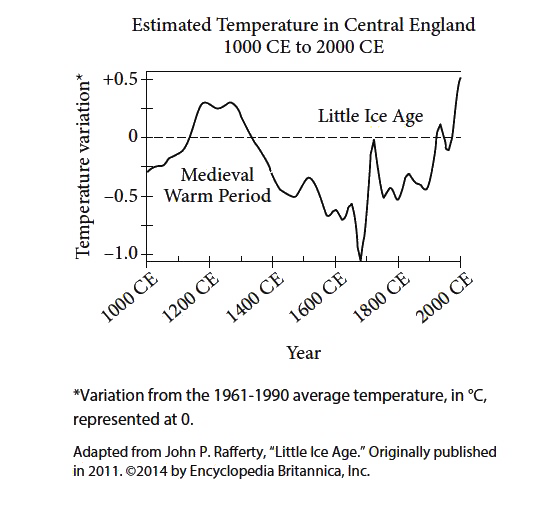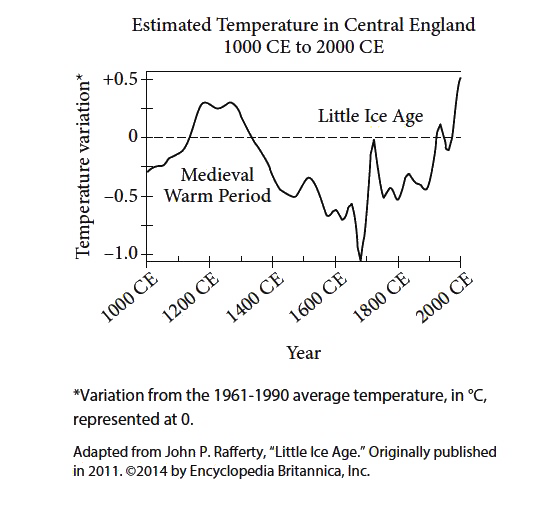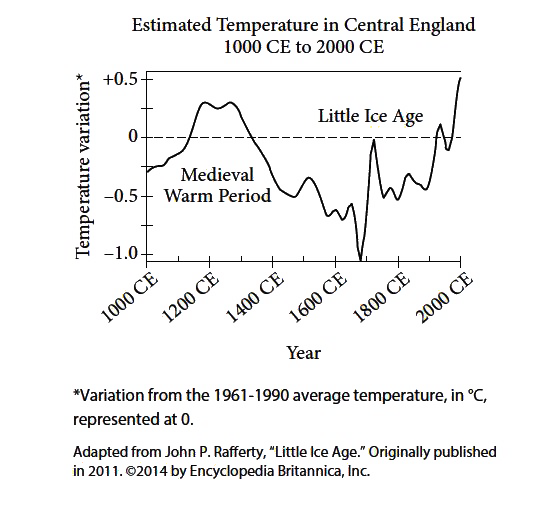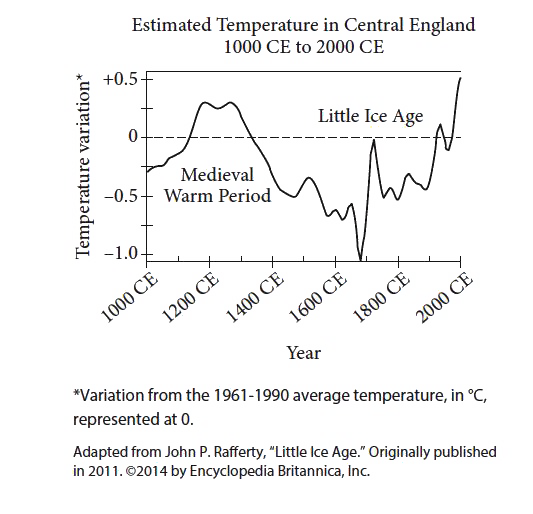Assertion:A disc-shaped mahnet is leviated above a superconductiong material that has been cooled by liquid nitrogen.
Reason:Superconductors repal a magnet.
If both assertion and reason are true and reason is the correct explanation of assertion.
If both assertion and reason are truw but reason is not correct explanation of assertion
If assertion is true but reason is false
If both assertion and reason are false.
The correct Answer is:A
To solve the question, we need to analyze both the assertion and the reason provided.
1. Understanding the Assertion:
- The assertion states that a disc-shaped magnet is levitated above a superconducting material that has been cooled by liquid nitrogen.
- This is possible because superconductors exhibit a phenomenon known as the Meissner effect when they are below their critical temperature.
2. Understanding the Reason:
- The reason given is that superconductors repel magnets.
- This is true due to the Meissner effect, which causes a superconductor to expel magnetic fields and create an opposing magnetic field when a magnet is brought close to it.
3. Critical Temperature:
- Superconductors only exhibit their unique properties below a certain critical temperature. Liquid nitrogen is often used to cool materials to achieve this state.
4. Induced Magnetic Field:
- When the disc-shaped magnet is placed above the cooled superconductor, the superconductor will induce a magnetic field that is equal in magnitude but opposite in direction to the magnetic field of the disc-shaped magnet.
- This induced magnetic field cancels the applied magnetic field within the superconductor.
5. Resulting Forces:
- The equal and opposite magnetic fields create a repulsive force between the magnet and the superconductor.
- This repulsive force is strong enough to levitate the magnet above the superconductor.
6. Conclusion:
- Since both the assertion and the reason are correct, and the reason correctly explains the assertion, we conclude that the answer to the question is that both the assertion and reason are true, and the reason is the correct explanation for the assertion.
Final Answer:
Both the assertion and the reason are correct, and the reason is the correct explanation of the assertion.
---
- The assertion states that a disc-shaped magnet is levitated above a superconducting material that has been cooled by liquid nitrogen.
- This is possible because superconductors exhibit a phenomenon known as the Meissner effect when they are below their critical temperature.
- The reason given is that superconductors repel magnets.
- This is true due to the Meissner effect, which causes a superconductor to expel magnetic fields and create an opposing magnetic field when a magnet is brought close to it.
- Superconductors only exhibit their unique properties below a certain critical temperature. Liquid nitrogen is often used to cool materials to achieve this state.
- When the disc-shaped magnet is placed above the cooled superconductor, the superconductor will induce a magnetic field that is equal in magnitude but opposite in direction to the magnetic field of the disc-shaped magnet.
- This induced magnetic field cancels the applied magnetic field within the superconductor.
- The equal and opposite magnetic fields create a repulsive force between the magnet and the superconductor.
- This repulsive force is strong enough to levitate the magnet above the superconductor.
- Since both the assertion and the reason are correct, and the reason correctly explains the assertion, we conclude that the answer to the question is that both the assertion and reason are true, and the reason is the correct explanation for the assertion.
Both the assertion and the reason are correct, and the reason is the correct explanation of the assertion.
Similar Questions
Assertion: Above Curie temperature, a frerromagnetic material becomes paramagnetic.
Reason: When a magnetic material is heated to very high temperature, it loses its magnetic properties.
View SolutionAssertion: Water drops take spherical shape when falling freely.
Reason: Water has minimum surface tension among all liquids.
View Solution
Knowledge Check
About 750 years ago, a powerful volcano erupted somewhere on Earth, kicking off a centuries-long cold snap known as the Little Ice Age. Identifying the volcano responsible has been tricky.
That a powerful volcano erupted somewhere in the world, sometime in the Middle Ages, is written in polar ice cores in the form of layers of sulfate deposits and tiny shards of volcanic glass. These cores suggest that the amount of sulfur the mystery volcano sent into the stratosphere put it firmly among the ranks of the strongest climate-perturbing eruptions of the current geological epoch, the Holocene, a period that stretches from 10,000 years ago to the present. A haze of stratospheric sulfur cools the climate by reflecting solar energy back into space.
In 2012, a team of scientists led by geochemist Gifford Miller strengthened the link between the mystery eruption and the onset of the Little Ice Age by using radiocarbon dating of dead plant material from beneath the ice caps on Baffin Island and Iceland, as well as ice and sediment core data, to determine that the cold summers and ice growth began abruptly between 1275 and 1300 C.E. (and became intensified between 1430 and 1455 C.E.). Such a sudden onset pointed to a huge volcanic eruption injecting sulfur into the stratosphere and starting the cooling. Subsequent, unusually large and frequent eruptions of ther volcanoes, as well as sea-ice/ocean feedbacks persisting long after the aerosols have been removed from the atmosphere, may have prolonged the cooling through the 1700s. Volcanologist Franck Lavigne and colleagues now think they’ve identified the volcano in question: Indonesia’s Samalas. One line of evidence, they note, is historical records. According to Babad Lombok, records of the island written on palm leaves in Old Javanese, Samalas erupted catastrophically before the end of the 13th century, evastating surrounding villages—including Lombok’s capital at the time, Pamatan—with ash and fast-moving sweeps of hot rock and gas called pyroclastic flows. The researchers then began to reconstruct the formation of the large, 800-meter-deep caldera [a basin-shaped volcanic crater] that now sits atop the volcano. They examined 130 outcrops on the flanks of the olcano, exposing sequences of pumice—ash hardened into rock—and other pyroclastic material. The volume of ash deposited, and the estimated height of the eruption plume (43 kilometers above sea level) put the eruption’s magnitude at a minimum of 7 on the volcanic explosivity index (which has a scale of 1 to 8)—making it one of the largest known in the Holocene. The team also performed radiocarbon analyses on carbonized tree trunks and branches buried within the pyroclastic deposits to confirm the date of the eruption, it could not, they concluded, have happened before 1257 C.E., and certainly happened in the 13th century. It’s not a total surprise that an Indonesian volcano might be the source of the eruption, Miller says. “An equatorial eruption is more consistent with the apparent climate impacts.” And, he adds, with sulfate appearing in both polar ice caps—Arctic and Antarctic—there is “a strong consensus” that this also supports an equatorial source. Another possible candidate—both in terms of timing and geographical location—is Ecuador’s Quilotoa, estimated to have last erupted between 1147 and 1320 C.E. But when Lavigne’s team examined shards of volcanic glass from this volcano, they found that they didn’t match the chemical composition of the glass found in polar ice cores, whereas the Samalas glass is a much closer match. That, they suggest, further strengthens the case that Samalas was responsible for the medieval “year without summer” in 1258 C.E.

The main purpose of the passage is toAdescribe periods in Earth’s recent geologic history.Bexplain the methods scientists use in radiocarbon analysis.Cdescribe evidence linking the volcano Samalas to the Little Ice Age.Dexplain how volcanic glass forms during volcanic eruptions.About 750 years ago, a powerful volcano erupted somewhere on Earth, kicking off a centuries-long cold snap known as the Little Ice Age. Identifying the volcano responsible has been tricky.
That a powerful volcano erupted somewhere in the world, sometime in the Middle Ages, is written in polar ice cores in the form of layers of sulfate deposits and tiny shards of volcanic glass. These cores suggest that the amount of sulfur the mystery volcano sent into the stratosphere put it firmly among the ranks of the strongest climate-perturbing eruptions of the current geological epoch, the Holocene, a period that stretches from 10,000 years ago to the present. A haze of stratospheric sulfur cools the climate by reflecting solar energy back into space.
In 2012, a team of scientists led by geochemist Gifford Miller strengthened the link between the mystery eruption and the onset of the Little Ice Age by using radiocarbon dating of dead plant material from beneath the ice caps on Baffin Island and Iceland, as well as ice and sediment core data, to determine that the cold summers and ice growth began abruptly between 1275 and 1300 C.E. (and became intensified between 1430 and 1455 C.E.). Such a sudden onset pointed to a huge volcanic eruption injecting sulfur into the stratosphere and starting the cooling. Subsequent, unusually large and frequent eruptions of ther volcanoes, as well as sea-ice/ocean feedbacks persisting long after the aerosols have been removed from the atmosphere, may have prolonged the cooling through the 1700s. Volcanologist Franck Lavigne and colleagues now think they’ve identified the volcano in question: Indonesia’s Samalas. One line of evidence, they note, is historical records. According to Babad Lombok, records of the island written on palm leaves in Old Javanese, Samalas erupted catastrophically before the end of the 13th century, evastating surrounding villages—including Lombok’s capital at the time, Pamatan—with ash and fast-moving sweeps of hot rock and gas called pyroclastic flows. The researchers then began to reconstruct the formation of the large, 800-meter-deep caldera [a basin-shaped volcanic crater] that now sits atop the volcano. They examined 130 outcrops on the flanks of the olcano, exposing sequences of pumice—ash hardened into rock—and other pyroclastic material. The volume of ash deposited, and the estimated height of the eruption plume (43 kilometers above sea level) put the eruption’s magnitude at a minimum of 7 on the volcanic explosivity index (which has a scale of 1 to 8)—making it one of the largest known in the Holocene. The team also performed radiocarbon analyses on carbonized tree trunks and branches buried within the pyroclastic deposits to confirm the date of the eruption, it could not, they concluded, have happened before 1257 C.E., and certainly happened in the 13th century. It’s not a total surprise that an Indonesian volcano might be the source of the eruption, Miller says. “An equatorial eruption is more consistent with the apparent climate impacts.” And, he adds, with sulfate appearing in both polar ice caps—Arctic and Antarctic—there is “a strong consensus” that this also supports an equatorial source. Another possible candidate—both in terms of timing and geographical location—is Ecuador’s Quilotoa, estimated to have last erupted between 1147 and 1320 C.E. But when Lavigne’s team examined shards of volcanic glass from this volcano, they found that they didn’t match the chemical composition of the glass found in polar ice cores, whereas the Samalas glass is a much closer match. That, they suggest, further strengthens the case that Samalas was responsible for the medieval “year without summer” in 1258 C.E.

Which choice best supports the claim that Quilotoa was not responsible for the Little Ice Age?ALines 3-4 (“Identifying . . . tricky”)BLines 26-28 (“Such a . . . cooling”)CLines 43-46 (“The researchers . . . atop the volcano”)DLines 71-75 (“But . . . closer match”)About 750 years ago, a powerful volcano erupted somewhere on Earth, kicking off a centuries-long cold snap known as the Little Ice Age. Identifying the volcano responsible has been tricky.
That a powerful volcano erupted somewhere in the world, sometime in the Middle Ages, is written in polar ice cores in the form of layers of sulfate deposits and tiny shards of volcanic glass. These cores suggest that the amount of sulfur the mystery volcano sent into the stratosphere put it firmly among the ranks of the strongest climate-perturbing eruptions of the current geological epoch, the Holocene, a period that stretches from 10,000 years ago to the present. A haze of stratospheric sulfur cools the climate by reflecting solar energy back into space.
In 2012, a team of scientists led by geochemist Gifford Miller strengthened the link between the mystery eruption and the onset of the Little Ice Age by using radiocarbon dating of dead plant material from beneath the ice caps on Baffin Island and Iceland, as well as ice and sediment core data, to determine that the cold summers and ice growth began abruptly between 1275 and 1300 C.E. (and became intensified between 1430 and 1455 C.E.). Such a sudden onset pointed to a huge volcanic eruption injecting sulfur into the stratosphere and starting the cooling. Subsequent, unusually large and frequent eruptions of ther volcanoes, as well as sea-ice/ocean feedbacks persisting long after the aerosols have been removed from the atmosphere, may have prolonged the cooling through the 1700s. Volcanologist Franck Lavigne and colleagues now think they’ve identified the volcano in question: Indonesia’s Samalas. One line of evidence, they note, is historical records. According to Babad Lombok, records of the island written on palm leaves in Old Javanese, Samalas erupted catastrophically before the end of the 13th century, evastating surrounding villages—including Lombok’s capital at the time, Pamatan—with ash and fast-moving sweeps of hot rock and gas called pyroclastic flows. The researchers then began to reconstruct the formation of the large, 800-meter-deep caldera [a basin-shaped volcanic crater] that now sits atop the volcano. They examined 130 outcrops on the flanks of the olcano, exposing sequences of pumice—ash hardened into rock—and other pyroclastic material. The volume of ash deposited, and the estimated height of the eruption plume (43 kilometers above sea level) put the eruption’s magnitude at a minimum of 7 on the volcanic explosivity index (which has a scale of 1 to 8)—making it one of the largest known in the Holocene. The team also performed radiocarbon analyses on carbonized tree trunks and branches buried within the pyroclastic deposits to confirm the date of the eruption, it could not, they concluded, have happened before 1257 C.E., and certainly happened in the 13th century. It’s not a total surprise that an Indonesian volcano might be the source of the eruption, Miller says. “An equatorial eruption is more consistent with the apparent climate impacts.” And, he adds, with sulfate appearing in both polar ice caps—Arctic and Antarctic—there is “a strong consensus” that this also supports an equatorial source. Another possible candidate—both in terms of timing and geographical location—is Ecuador’s Quilotoa, estimated to have last erupted between 1147 and 1320 C.E. But when Lavigne’s team examined shards of volcanic glass from this volcano, they found that they didn’t match the chemical composition of the glass found in polar ice cores, whereas the Samalas glass is a much closer match. That, they suggest, further strengthens the case that Samalas was responsible for the medieval “year without summer” in 1258 C.E.

As used in line 68, the phrase “Another possible candidate” implies thatApowerful volcanic eruptions occur frequently.Bthe effects of volcanic eruptions can last for centuries.Cscientists know of other volcanoes that erupted during the Middle Ages.Dother volcanoes have calderas that are very large.
Assertion :- H2S+Cl2→2HCl+S
In the above reaction, Cl has been oxidised to Cl− while S−2 has been reduced to S
Reason :- In a reaction the element whose oxidation number decreases is reduced and the element whose oxidation number increases is oxidised
View SolutionAssertion: A thin aluminium disc, spinning freely about a centre pivot, is quickly brought to rest when . placed between the poles of a strong U-shaped magnet
Reason:A current induced in a disc rotating in a magnetic field produces a force which tends to oppose the disc's motion.
View SolutionAssertion:Horizontal component of eath's magnetic field (H) has been chosen as a magnetic element instead of the vertical component (V).
Reason: Most of our experiments are performed in horizontal configuration. So, H is more relevant.
View SolutionAbout 750 years ago, a powerful volcano erupted somewhere on Earth, kicking off a centuries-long cold snap known as the Little Ice Age. Identifying the volcano responsible has been tricky.
That a powerful volcano erupted somewhere in the world, sometime in the Middle Ages, is written in polar ice cores in the form of layers of sulfate deposits and tiny shards of volcanic glass. These cores suggest that the amount of sulfur the mystery volcano sent into the stratosphere put it firmly among the ranks of the strongest climate-perturbing eruptions of the current geological epoch, the Holocene, a period that stretches from 10,000 years ago to the present. A haze of stratospheric sulfur cools the climate by reflecting solar energy back into space.
In 2012, a team of scientists led by geochemist Gifford Miller strengthened the link between the mystery eruption and the onset of the Little Ice Age by using radiocarbon dating of dead plant material from beneath the ice caps on Baffin Island and Iceland, as well as ice and sediment core data, to determine that the cold summers and ice growth began abruptly between 1275 and 1300 C.E. (and became intensified between 1430 and 1455 C.E.). Such a sudden onset pointed to a huge volcanic eruption injecting sulfur into the stratosphere and starting the cooling. Subsequent, unusually large and frequent eruptions of ther volcanoes, as well as sea-ice/ocean feedbacks persisting long after the aerosols have been removed from the atmosphere, may have prolonged the cooling through the 1700s. Volcanologist Franck Lavigne and colleagues now think they’ve identified the volcano in question: Indonesia’s Samalas. One line of evidence, they note, is historical records. According to Babad Lombok, records of the island written on palm leaves in Old Javanese, Samalas erupted catastrophically before the end of the 13th century, evastating surrounding villages—including Lombok’s capital at the time, Pamatan—with ash and fast-moving sweeps of hot rock and gas called pyroclastic flows. The researchers then began to reconstruct the formation of the large, 800-meter-deep caldera [a basin-shaped volcanic crater] that now sits atop the volcano. They examined 130 outcrops on the flanks of the olcano, exposing sequences of pumice—ash hardened into rock—and other pyroclastic material. The volume of ash deposited, and the estimated height of the eruption plume (43 kilometers above sea level) put the eruption’s magnitude at a minimum of 7 on the volcanic explosivity index (which has a scale of 1 to 8)—making it one of the largest known in the Holocene. The team also performed radiocarbon analyses on carbonized tree trunks and branches buried within the pyroclastic deposits to confirm the date of the eruption, it could not, they concluded, have happened before 1257 C.E., and certainly happened in the 13th century. It’s not a total surprise that an Indonesian volcano might be the source of the eruption, Miller says. “An equatorial eruption is more consistent with the apparent climate impacts.” And, he adds, with sulfate appearing in both polar ice caps—Arctic and Antarctic—there is “a strong consensus” that this also supports an equatorial source. Another possible candidate—both in terms of timing and geographical location—is Ecuador’s Quilotoa, estimated to have last erupted between 1147 and 1320 C.E. But when Lavigne’s team examined shards of volcanic glass from this volcano, they found that they didn’t match the chemical composition of the glass found in polar ice cores, whereas the Samalas glass is a much closer match. That, they suggest, further strengthens the case that Samalas was responsible for the medieval “year without summer” in 1258 C.E.

The author uses the phrase “is written in” (line 6) most likely to
View SolutionAbout 750 years ago, a powerful volcano erupted somewhere on Earth, kicking off a centuries-long cold snap known as the Little Ice Age. Identifying the volcano responsible has been tricky.
That a powerful volcano erupted somewhere in the world, sometime in the Middle Ages, is written in polar ice cores in the form of layers of sulfate deposits and tiny shards of volcanic glass. These cores suggest that the amount of sulfur the mystery volcano sent into the stratosphere put it firmly among the ranks of the strongest climate-perturbing eruptions of the current geological epoch, the Holocene, a period that stretches from 10,000 years ago to the present. A haze of stratospheric sulfur cools the climate by reflecting solar energy back into space.
In 2012, a team of scientists led by geochemist Gifford Miller strengthened the link between the mystery eruption and the onset of the Little Ice Age by using radiocarbon dating of dead plant material from beneath the ice caps on Baffin Island and Iceland, as well as ice and sediment core data, to determine that the cold summers and ice growth began abruptly between 1275 and 1300 C.E. (and became intensified between 1430 and 1455 C.E.). Such a sudden onset pointed to a huge volcanic eruption injecting sulfur into the stratosphere and starting the cooling. Subsequent, unusually large and frequent eruptions of ther volcanoes, as well as sea-ice/ocean feedbacks persisting long after the aerosols have been removed from the atmosphere, may have prolonged the cooling through the 1700s. Volcanologist Franck Lavigne and colleagues now think they’ve identified the volcano in question: Indonesia’s Samalas. One line of evidence, they note, is historical records. According to Babad Lombok, records of the island written on palm leaves in Old Javanese, Samalas erupted catastrophically before the end of the 13th century, evastating surrounding villages—including Lombok’s capital at the time, Pamatan—with ash and fast-moving sweeps of hot rock and gas called pyroclastic flows. The researchers then began to reconstruct the formation of the large, 800-meter-deep caldera [a basin-shaped volcanic crater] that now sits atop the volcano. They examined 130 outcrops on the flanks of the olcano, exposing sequences of pumice—ash hardened into rock—and other pyroclastic material. The volume of ash deposited, and the estimated height of the eruption plume (43 kilometers above sea level) put the eruption’s magnitude at a minimum of 7 on the volcanic explosivity index (which has a scale of 1 to 8)—making it one of the largest known in the Holocene. The team also performed radiocarbon analyses on carbonized tree trunks and branches buried within the pyroclastic deposits to confirm the date of the eruption, it could not, they concluded, have happened before 1257 C.E., and certainly happened in the 13th century. It’s not a total surprise that an Indonesian volcano might be the source of the eruption, Miller says. “An equatorial eruption is more consistent with the apparent climate impacts.” And, he adds, with sulfate appearing in both polar ice caps—Arctic and Antarctic—there is “a strong consensus” that this also supports an equatorial source. Another possible candidate—both in terms of timing and geographical location—is Ecuador’s Quilotoa, estimated to have last erupted between 1147 and 1320 C.E. But when Lavigne’s team examined shards of volcanic glass from this volcano, they found that they didn’t match the chemical composition of the glass found in polar ice cores, whereas the Samalas glass is a much closer match. That, they suggest, further strengthens the case that Samalas was responsible for the medieval “year without summer” in 1258 C.E.

Which choice provides the best evidence for the answer to the previous question?
View Solution
